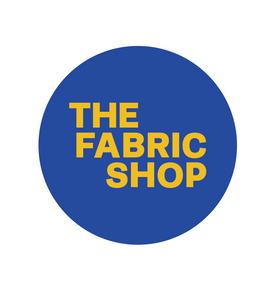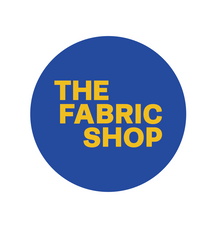Unveiling the Elegance of Satin Fabric
Satin fabric has been on a long journey, travelling through time and space all the way from Ancient China to influence the world of fashion. There’s so much to know about this wonderful fabric, so we’ve put together a quick and easy guide for anyone new to the satin game.
Let’s review what you need to know about satin, including its origin, how it’s typically used, and which types of satin you can find in The Fabric Shop range.
What is Satin?
One of the most common misconceptions we see is that satin is a type of material when it’s actually a type of weave. There are three major textile weave types: satin, plain weave, and twill.
Satin is a weave that creates a shiny, soft fabric known for its draping capabilities. When fabric is woven, threads are drawn over and under each other to create the resultant texture. With satin, there are long stretches where no interlacing points touch each other called ‘floats’, and these are responsible for its soft texture and shiny appearance. It’s also why satin tends to have a shiny side and a dull side.
There are many materials that can be transformed into a bolt of satin. The most common are silk, polyester, and nylon. In Ancient China – where this technique originated – satin weaving was almost always done with silk threads.
Satin vs. Silk vs. Sateen
Satin is often confused with silk and sateen, as they’re all known for similar smooth and shiny properties. But they’re actually three different kinds of fabric.
We’ve already established that satin is a type of weave that’s made using long fibres like those found in silk. However, when the satin weaving technique is used on materials that have short staple fibres – like cotton – we call the result ‘sateen’. While it doesn’t have the same lustre as full-on satin, it’s a cost-effective option for home décor use.
Silk, of course, is a type of fibre, whereas satin and sateen refer to the type of weave.
Regardless of which satin you choose to create your garment with, it’s important to learn how to work with it. Over our years in business, we’ve seen plenty of new sewers struggle with satin. This is a slippery fabric, which means it can be tough to sew (even if you have a few years of experience under your belt). It’s also prone to snags that can draw single threads out of the fabric, thus pulling the entire panel into a strange shape. This is why learning how to sew a great seam is very important!
How is Satin Fabric Used?
Dating all the way back to its origins in Ancient China, satin has been prized as a luxury item all through its history. The most luxurious version of satin was woven with pure silk, furnishing the wardrobes of Italian dignitaries and royal Europeans making its way into the halls of the Palace of Versailles.
These days, satin can be made from more than just silk, meaning it can suit multiple budget ranges (not just royal ones). This makes it a popular choice across the board.
Much like in history, modern designers still prize satin fabric for its drape and shine. That makes it a popular choice for rich or formal dresses, especially because it’s resistant to wrinkling. Satin fabric can also be used for footwear, purses and other accessories, and even homewares like bed linens or upholstery.
Which Satin Should I Buy?
Each type of satin fabric has its own benefits and drawbacks, so it’s important to know which types are available to you when you embark on a project. Below, we’re reviewing three of our most popular satin fabrics in NZ to help you make your choice.
For Shine and Stretch
With a luxurious shine and drape, stretch satin has a forgiving and comfortable stretch to it. This combination makes it an ideal choice for formal occasions where movement is required. Create stunning ball gowns, bridesmaid dresses, or even tailored suits that require a high-end finish without the restrictive movement.
For Matte Luxury
Bring out the luxurious feel without breaking the bank thanks to the Sophia satin. This is a slightly stretch satin with low lustre but a lovely, silken feel. In other words, it’s got a wonderful drape that’s perfect for gowns, capes, and other flowy pieces.
For the Royal Feel
With no stretch and a heavier feel, Duchess satin is an ultra-lustrous choice that’s great for structured gowns. The fabric truly brings a sense of royalty to any garment, making it a great choice for more deluxe occasions.
This kind of satin is usually dyed with solid colours and used to make long, flowing dresses. Think French royalty, Italian nobility, and Ancient Chinese elegance. That said, it can sometimes be cheaper than other types of satin, depending on the base fabric (which makes it a cost-effective choice to upscale your garment of choice).
Explore our range of satin fabrics to create your next upscale garment.
Our range of cost-effective, high-quality satin fabrics in NZ are perfect for everyone. Whether you’re a novice sewer or a long-time veteran of the needle, we have the colour and cut to suit your needs. Spoilt for choice?
Reach out to The Fabric Shop team so we can guide you to the perfect choice for you!

